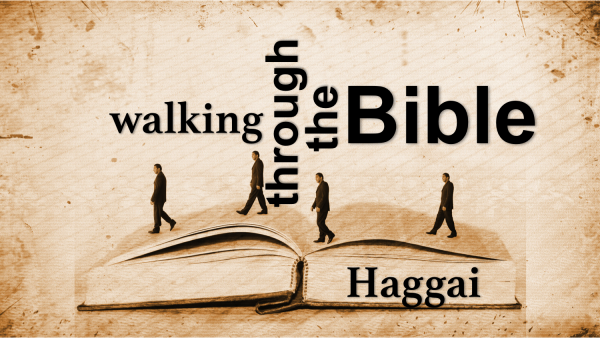The prophet Haggai was the first to prophesy in Jerusalem following the Babylonian captivity. He was likely born in Babylon, having never personally seen the homeland until his return in 520 B.C. It is known that this was the time in which he came back to Jerusalem because in Ezra 4:24-5:1, these events are mentioned: “Then ceased the work of the house of God which is at Jerusalem. So it ceased unto the second year of the reign of Darius king of Persia. Then the prophets, Haggai the prophet, and Zechariah the son of Iddo, prophesied unto the Jews that were in Judah and Jerusalem in the name of the God of Israel, even unto them.” Haggai and Zechariah both went to Jerusalem at the command of Darius to encourage the people to rebuild the temple, and it is said that it happened in the second year of Darius’ reign. Knowing that Darius’ reign began in 521 B.C., that concludes Haggai and Zechariah’s work being in 520 B.C. The importance of knowing this date is the fact that the first group of Jews had returned to Jerusalem in 536 B.C. at Cyrus’ order. They had not just neglected the rebuilding of the temple for a few weeks or months, but rather sixteen years! Haggai and Zechariah both had their work cut out for them in getting through to these people.
God’s dissatisfaction with His people is illustrated by his reproof of them: “Then came the word of the Lord by Haggai the prophet, saying, Is it time for you, O ye, to dwell in your cieled houses, and this house lie waste? Now therefore thus saith the Lord of hosts; Consider your ways. Ye have sown much, and bring in little; ye eat, but ye have not enough; ye drink, but ye are not filled with drink; ye clothe you, but there is none warm; and he that earneth wages earneth wages to put it unto a bad with holes” (Haggai 1:3-6). For sixteen years the people rebuilt their houses, they sealed their houses to comfort themselves, and yet the house of the Lord still laid desolate. God tells them twice in this book, once in verse five, to consider their ways. What were their intentions and what were their motives? Was comfort all they sought, or were they also concerned with their God? By the prophesying of Haggai the people were motivated to continue work on the temple and completed it in just a short time. But still in the minds of many there was a problem.
Among those returned captives were the very elderly who had lived in Jerusalem before the exile and remembered the glory of Solomon’s temple. It was remembered for its beauty, splendor, and extravagance. Now viewing this meager effort, by comparison it was as though it were nothing (Haggai 2:3). However, through the remainder of the book, God through Haggai, eases their minds by reminding them that the glory of even Solomon’s temple is nothing compared to the glory of the latter temple that God Himself would build. That latter temple is the church wherein man contacts Christ and lives in hope of the eternal morrow. Surely there is no physical beauty that can compare. In fact it is the mention of this latter temple that portrays Christ in the book. In Haggai 2:9, the Lord said, “The glory of this latter house shall be greater than of the former, saith the Lord of hosts: and in this place will I give peace, saith the Lord of hosts.” The temple itself would be enlarged by Herod in later years and would eventually rival the glory of Solomon’s temple, but the greatest glory is found in the current temple of God, the church purchased by Christ’s greatest possession, His blood.
Haggai faced a seemingly, insurmountable foe in dealing with the indifferent Jews, but through perseverance convicted them of the need to rise up and serve God. The foe faced today in the world feels insurmountable, but if we too shall persevere, then great service will be rendered unto God by all whom we contact.

